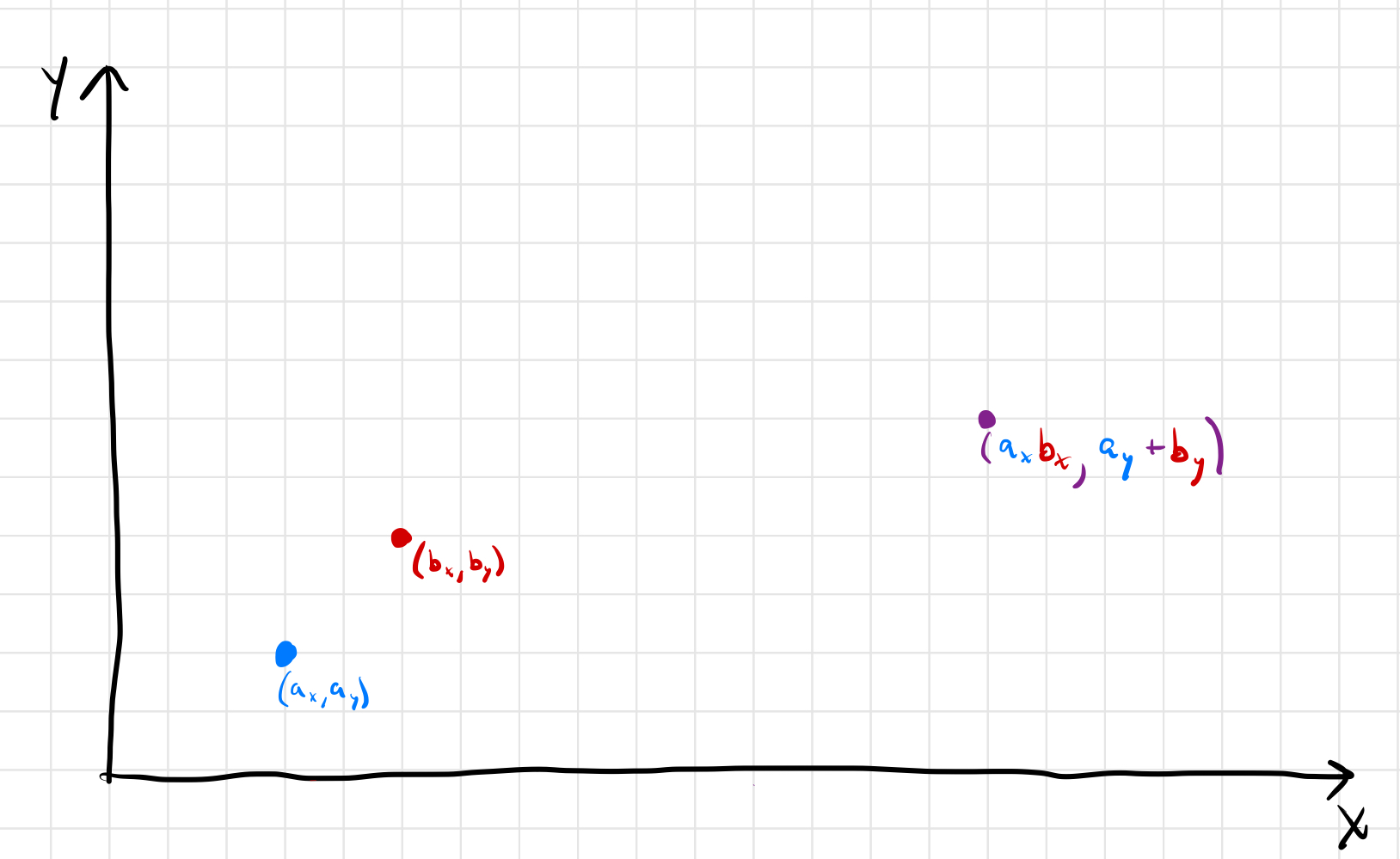Guess the function
Let’s play a game. I’m going to draw two points on an x-y plane and give you a rule which you can use to generate new points. You can generate as many new points as you want using my rule. If you connect all the points, you get a function. Your goal is to guess the function. Ok? Let’s go.

Ok, I’ve drawn two points, \(a\) and \(b\). From these two points, you can generate a new third point \(c\), which I’ve drawn in purple. The x coordinate of \(c\) is the product of the x coordinates of \(a\) and \(b\). The y coordinate of \(c\) is the sum of of the y coordinates of \(a\) and \(b\). That’s the rule.
To restate, here is my rule:
From any 2 points, \(a\) and \(b\), you can generate a 3rd point \(c\) where \(c_x = a_x \cdot b_x\) and \(c_y = a_y + b_y\).
So… what’s the function? I’m looking for an answer of the form:
- your function is \(y = 2x^2\)
- or your function is \(y = xy + 5\)
- or something like that
Follow-up questions
If you think you have the answer, here are some follow-up questions:
- What if I picked two different starting points? How would the function change?
- Can I pick any two starting points? Or can I only pick certain points?
- Is my rule reversible? Can you, for example, use \(b\) and \(c\) to produce \(a\)? Why or why not? How can you convince yourself whether or not that’s allowed?